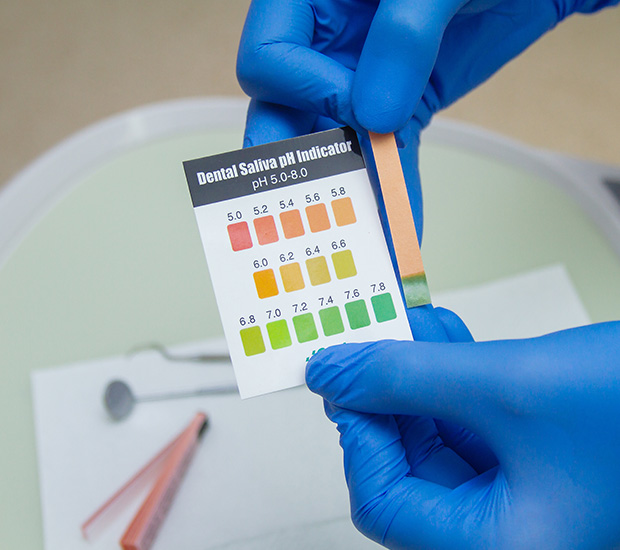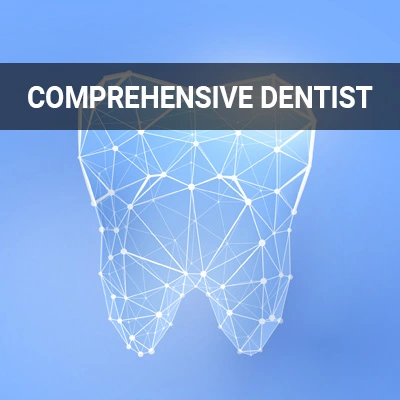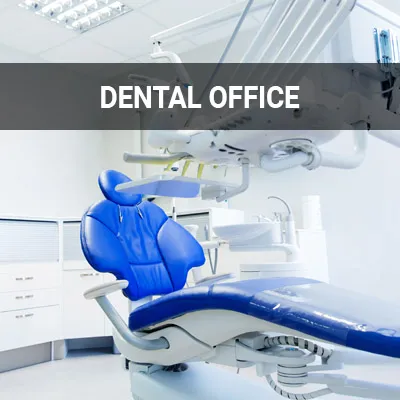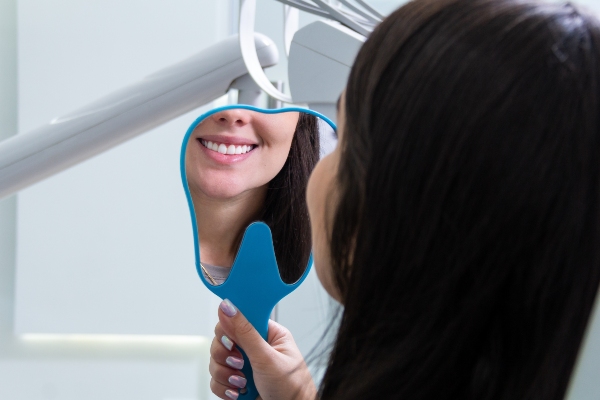Saliva pH Testing San Ramon, CA
Saliva pH testing helps us determine if a patient's pH levels are harmful to their teeth. This test can also help measure various health levels. While overlooked, this can be an important health check. Various factors can influence one's salivary pH levels. pH levels must remain basic for optimal health.
Saliva pH testing is available at Aaria Dental in San Ramon and the surrounding area. Some saliva pH levels can lead to irreversible damage. Call us today at (925) 967-2444 to schedule an appointment or learn more about our services.
The Meaning of Different pH Levels
Known as pH, or potential hydrogen, this term describes a substance's chemical acidity level vs. its alkalinity level, with 14 being the most alkaline and zero being the most acidic. Saliva typically falls in a pH range of 6.2 to 7.6, and this can change due to food and drink. Additionally, aging results in more acidic saliva.
Since the human body is made up of approximately 60% water, the ideal pH should be close to 7.0, or water. A low pH level indicates too much acid in the blood and may preclude metabolic acidosis, which is associated with diabetes, high blood pressure, kidney disease, and other related conditions. A high pH level indicates too much alkaline in the blood and may preclude a metabolic alkalosis, which is associated with adrenal disease and alcohol abuse.
“Saliva typically falls in a pH range of 6.2 to 7.6, and this can change due to food and drink.”
Acidic pH Levels
Acidic beverages can cause the pH level of one's saliva to decrease below 5.5. Once this occurs, the acids in the mouth may begin to break down, or demineralize, the tooth enamel. Tooth enamel that becomes too thin will expose the dentin, leading to temperature sensitivity and discomfort when drinking sugary beverages.
According to one 2013 study published in the Journal of Indian Society of Periodontology, participants with chronic generalized periodontitis had a relatively more acidic salivary pH than the clinically healthy group. Saliva pH below 7.0 is typically an indication of acidemia, which results in an abnormal amount of acidity in the blood. If the patient has a chronic condition, they are at heightened risk for dental decay, halitosis, and periodontitis and, since oral health is directly linked with overall health, a slew of systemic diseases.
“Saliva pH below 7.0 is typically an indication of acidemia, or abnormal acidity of the blood.”
Conditions Related to Alkaline pH Levels
Conditions
Salivary pH levels containing high alkaline levels affect the blood's pH. Having too much alkaline in the blood (pH above 7) can contribute to many conditions affecting the mouth and body. The same 2013 study found that the salivary pH was more alkaline for patients with generalized chronic gingivitis. High alkaline levels in the blood can lead to alkalosis. A pH high in alkaline can result from decreased carbon dioxide levels, an increase in bicarbonate, low potassium levels, alcohol abuse, or hypokalemia.
Symptoms
High alkaline pH has the same oral symptoms as acidic pH levels: persistent bad breath, sensitivity to hot and cold, and frequent cavity development. Alkalosis symptoms include nausea, numbness, prolonged muscle spasms, tremors, twitching, dizziness, confusion and in severe cases, stupor and comas.
“Having too much alkaline in the blood (pH above 7) can contribute to many conditions affecting the mouth and body.”
Check out what others are saying about our dental services on Yelp: Saliva pH Testing in San Ramon, CA
Performing Saliva pH Tests
We can test patients' saliva pH in our office using pH strips. As foods and beverages can influence the pH level of the mouth, patients should refrain from eating or drinking for at least two hours before the exam for the most accurate results.
The procedure itself is quick and easy. The patient must fill their mouth with saliva, then dispose of it either by swallowing or spitting it out. The patient must then fill their mouth with saliva again, this time taking care to place a small amount of it on a pH strip. Then, we will match the color of the pH strip to determine the patient's pH level.
“We can test patients’ saliva pH in our office using pH strips.”
Questions Answered on This Page
Q. How do high alkaline levels affect oral and systemic health?
Q. What causes an acidic saliva pH?
Q. How are saliva pH tests performed?
Q. How can I improve my saliva pH levels?
People Also Ask
Q. How does oral health affect overall health?
Q. What are some conditions that a complete health dentist can diagnose?
Q. Why is preventative care important?
Q. What family members may need extra help with their oral hygiene?
Improving Saliva pH Levels
Luckily, there are several steps patients can take to improve their saliva pH levels. This includes avoiding acidic beverages, such as soft drinks. If patients must drink acidic beverages, they should refrain from swishing them around in the mouth. They may also want to consider rinsing their mouth with water after eating or drinking, regardless of whether acidic beverages are involved.
Chewing sugarless gum can also help increase the saliva flow, thus washing away any acids. Milk and other calcium-containing foods and beverages may also help neutralize acids. Furthermore, it is best to wait an hour to brush teeth after eating something acidic, giving the saliva time to wash away acids and remineralize the enamel.
“Luckily, there are several steps patients can take to improve their saliva pH levels.”
Frequently Asked Questions About Saliva pH Testing
Q. Why is it bad to brush my teeth while my mouth is acidic?
A. Brushing your teeth while your mouth is at peak acidity can cause you to brush away the dissolved minerals, causing the weakened surface to become more susceptible to damage. As such, it is best to wait at least an hour after you have consumed acidic foods or beverages before brushing teeth. Rinsing with plain water immediately after eating can also raise your pH levels while removing loose food particles.
Q. What is saliva made up of?
A. Saliva comprises over 99% water. However, saliva collected from the mouth also contains desquamated oral epithelial cells, leucocytes, fluid from the gingival crevice, food remnants, and microorganisms and their products.
Q. Does tobacco use affect salivary pH?
A. Yes. A study published in the Journal of Oral and Maxillofacial Pathology found that tobacco smokers and tobacco chewers had significantly more acidic salivary pH levels than those who did not use tobacco at all.
Q. What happens if your salivary pH levels drop too low?
A. Once your salivary pH levels drop below 5.5, the tooth enamel will begin to break down. This damage is permanent, as tooth enamel cannot grow back. Teeth may become sensitive, and you may notice a yellowish discoloration. This also makes you more susceptible to cavities.
Q. How can I keep a balanced pH in my mouth?
A. Limit your intake of sugary soft drinks and black coffee. If you must indulge, drink them quickly and rinse afterward with a drink of water. Add dairy to your coffee to counteract the acidity. Chew gum, preferably one with xylitol, to encourage saliva production. Finally, stay hydrated by drinking plenty of pH-balanced water.
Dental Terminology
Learn More Today
If you are interested in better understanding complete health dentistry or information regarding saliva ph testing, call us at 925-967-2444 to set up an appointment.
Helpful Related Links
- American Dental Association (ADA). Glossary of Dental Clinical Terms. 2025
About our business and website security
- Aaria Dental was established in 2023.
- We accept the following payment methods: American Express, Cash, Check, Discover, MasterCard, and Visa
- We serve patients from the following counties: Contra Costa County
- We serve patients from the following cities: San Ramon, Norris Canyon, Danville, Blackhawk, and Dublin
- Norton Safe Web. View Details
- Trend Micro Site Safety Center. View Details
Back to top of Saliva pH Testing














